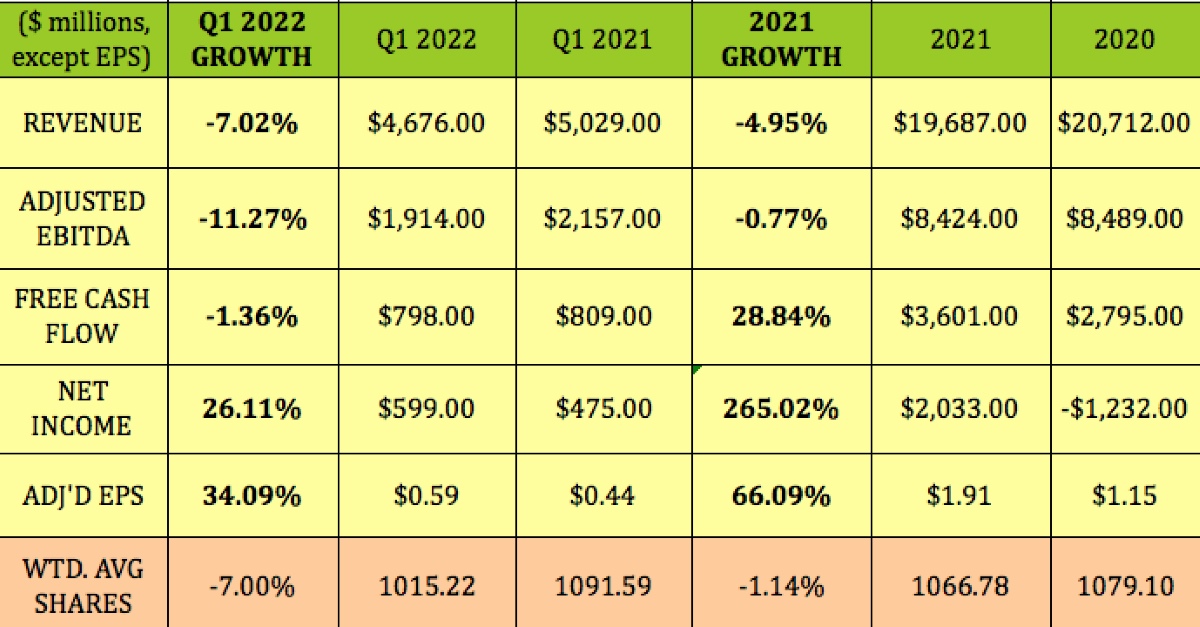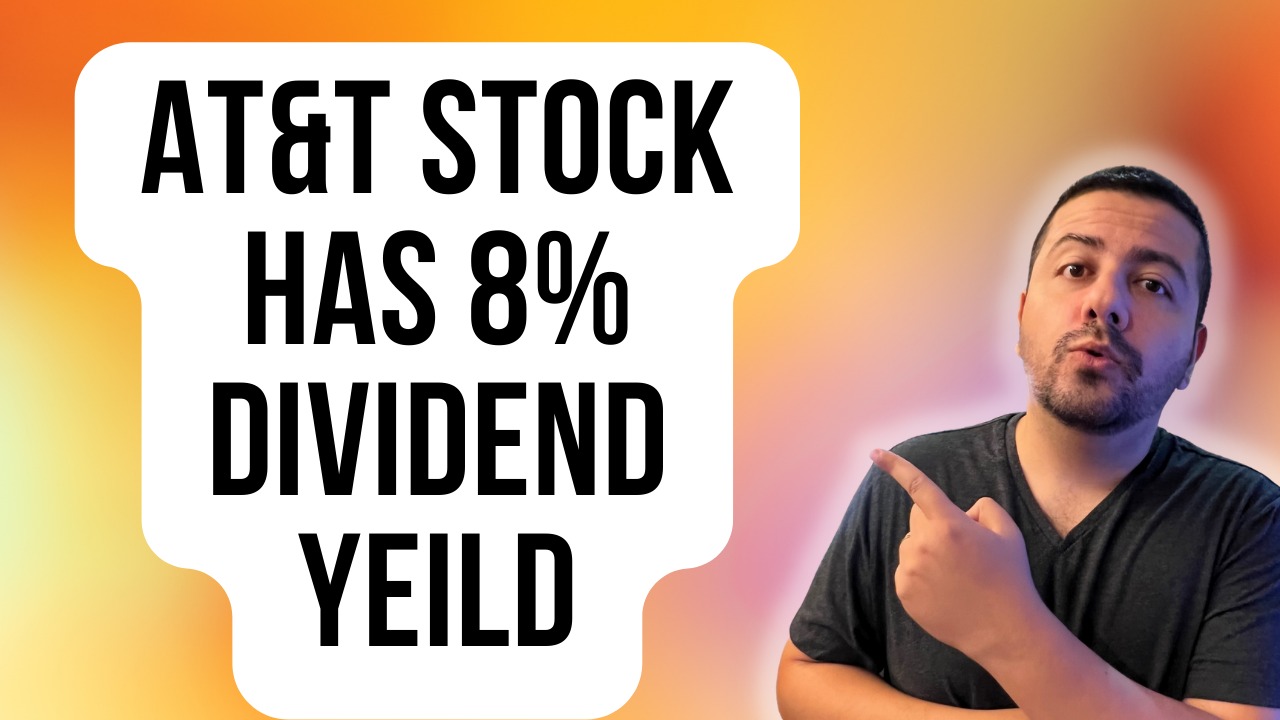

Finance
When Does LUMN Pay Dividends?
Published: January 3, 2024
Find out when LUMN pays dividends and how it can benefit your finance portfolio. Stay updated and maximize your investment returns.
(Many of the links in this article redirect to a specific reviewed product. Your purchase of these products through affiliate links helps to generate commission for LiveWell, at no extra cost. Learn more)
Table of Contents
Introduction
Welcome to the world of dividends, where investors can earn a consistent stream of income from their investments. Dividends are a significant aspect of investing, and they play a crucial role in building wealth over time. In this article, we will explore the fascinating world of LUMN dividend payments and understand when investors can expect to receive these payments.
LUMN is a leading telecommunications company that provides a wide range of communications and information technology services. As a publicly traded company, LUMN has a history of offering dividends to its shareholders, rewarding them for their investment in the company.
Dividends are cash payments made by a company to its shareholders, typically on a regular basis. These payments are based on a portion of the company’s profits, and they serve as a way for companies to share their success with shareholders. For investors, dividends provide a steady income stream, which can be especially attractive for those seeking passive income or looking to supplement their existing income.
To understand when LUMN pays its dividends, it’s important to delve into the dividend schedule and the factors that influence dividend payments. By understanding these key aspects, investors can plan their investments and manage their expectations accordingly.
Understanding LUMN Dividend Payments
When it comes to understanding LUMN dividend payments, there are a few key concepts to grasp. Firstly, LUMN determines the dividend payout based on its financial performance and the decisions made by its board of directors. The board weighs various factors, including the company’s earnings, cash flow, debt obligations, and future growth plans, before deciding on the dividend amount.
Secondly, LUMN follows a dividend policy that outlines the frequency and consistency of dividend payments. This policy provides clarity to investors and helps them anticipate when they can expect to receive dividend income. Typically, LUMN pays dividends on a quarterly basis, meaning shareholders can look forward to receiving dividends every three months.
Furthermore, LUMN offers different types of dividends, including cash dividends and stock dividends. Cash dividends are the more common type, where shareholders receive their dividend payments in the form of cash. On the other hand, stock dividends involve the distribution of additional shares of stock to shareholders. These additional shares increase the number of shares held by each investor but do not impact the overall value of their investment. Both cash and stock dividends offer a way for shareholders to benefit from a company’s success.
It’s important to note that dividend payments can fluctuate over time. While a company like LUMN may have a history of consistent dividend payments, external factors such as economic conditions, regulatory changes, or shifts in the telecommunications industry can impact dividend amounts. Therefore, investors should carefully monitor the financial health of LUMN and any relevant industry trends to assess the potential stability of dividend payments.
Lastly, it’s worth mentioning that dividend payments are subject to taxation. Depending on the jurisdiction and an individual investor’s tax status, dividend income may be taxed at different rates. It’s important for investors to consult with tax professionals or financial advisors to understand the tax implications of their dividend income.
LUMN Dividend Schedule
To provide predictability and transparency to its shareholders, LUMN follows a consistent dividend schedule. As mentioned earlier, LUMN typically pays dividends on a quarterly basis, meaning shareholders can expect to receive dividend payments four times a year.
The exact dates of dividend payments are determined by LUMN and are typically announced well in advance. These dates are crucial for investors to plan their finances and anticipate the inflow of dividend income. Many investors rely on this income to cover their expenses or reinvest it back into the company.
Dividend payment dates for LUMN can vary from year to year. To stay updated on the dividend schedule, shareholders can refer to LUMN’s investor relations website, where the company releases pertinent information and updates regarding dividend payments.
In addition to the payment date, LUMN also specifies the “ex-dividend” date and the “record” date. The ex-dividend date is the date on which a buyer of the stock will not be entitled to receive the upcoming dividend payment. It is important for investors to be aware of this date if they plan to purchase LUMN stock and wish to receive the dividend payment.
The record date, on the other hand, is the date on which a shareholder must be on the company’s books to be eligible to receive the dividend. In other words, investors must hold the stock before the record date to be counted as a shareholder of record and receive the dividend for that particular period.
By understanding the dividend schedule, including the payment date, ex-dividend date, and record date, investors can plan their investments and ensure they meet the necessary requirements to receive their dividend payments promptly.
Factors Affecting LUMN Dividend Payments
Several factors can influence LUMN’s dividend payments. Understanding these factors can provide valuable insights into the stability and potential variability of dividend income. Let’s take a closer look at some key factors that impact LUMN’s dividend payments.
1. Financial Performance: The financial performance of LUMN is a crucial factor in determining dividend payments. The company’s earnings, cash flow, and profitability are evaluated by the board of directors when deciding on the dividend amount. If LUMN experiences a period of strong financial performance, it may lead to higher dividend payments. Conversely, if the company faces financial challenges, it might result in lower or no dividends.
2. Debt Obligations: LUMN’s debt obligations play a significant role in determining dividend payments. The company needs to meet its financial obligations, including interest payments on outstanding debt. If LUMN has substantial debt, it may impact the amount of cash available for dividend payments. In such cases, the company may choose to reduce dividends to allocate more funds towards debt repayment.
3. Future Growth Plans: LUMN’s future growth plans and investment strategies also influence dividend payments. The company may choose to reinvest a portion of its profits into research and development, infrastructure upgrades, or expansion initiatives. These investments can fuel future growth and enhance long-term shareholder value but may result in lower dividend payments in the short term.
4. Regulatory Environment: The regulatory environment in the telecommunications industry can affect LUMN’s dividend payments. Changes in regulations, licensing requirements, or government policies can impact the company’s financial performance and influence dividend decisions. Investors should monitor regulatory developments that could potentially impact LUMN’s operations and dividend policy.
5. Macroeconomic Factors: The overall state of the economy and macroeconomic factors can indirectly impact LUMN’s dividend payments. Factors such as economic growth, inflation, interest rates, and consumer spending patterns can influence the company’s financial performance and its ability to generate profits. A stable and growing economy is generally conducive to consistent dividend payments.
By considering these factors, investors can gain a better understanding of the potential variability and stability of LUMN’s dividend payments. It is important to note that these factors interplay with each other and may vary over time, leading to fluctuations in dividend amounts from one period to another.
LUMN Dividend History
LUMN has a rich dividend history, reflecting its commitment to rewarding shareholders. Examining the dividend history can provide valuable insights into the company’s dividend track record and help investors assess its consistency and growth potential. Let’s delve into LUMN’s dividend history.
Over the years, LUMN has demonstrated a dedication to distributing regular dividends to its shareholders. While dividend amounts may vary from period to period, the company has maintained a consistent dividend payout pattern. LUMN typically declares dividends on a quarterly basis, allowing shareholders to receive regular income from their investment.
The dividend growth rate is another important aspect to consider when analyzing LUMN’s dividend history. A consistently increasing dividend payout can indicate the company’s financial strength and its ability to generate sustainable profits. Investors often seek companies with a track record of dividend growth as it can be a sign of a healthy and well-managed business.
However, it’s important to note that dividend history is not a guarantee of future dividend performance. While LUMN has a positive dividend history, external factors, financial conditions, or company-specific decisions can impact future dividend payments. Investors should always conduct thorough research and consider multiple factors when making investment decisions.
To access detailed information about LUMN’s dividend history, investors can refer to the company’s investor relations website or financial reports. These sources will provide a comprehensive overview of dividend payments, including historical dividend amounts, payment dates, ex-dividend dates, and record dates.
By reviewing LUMN’s dividend history, investors can gain a better understanding of the company’s commitment to shareholder value and its dividend payout patterns over time. This information can serve as a valuable tool in evaluating the potential benefits and risks associated with investing in LUMN.
How to Participate in LUMN Dividend Program
If you’re interested in participating in LUMN’s dividend program and earning regular dividends, there are a few key steps to follow. Let’s explore how you can get started and become a part of LUMN’s dividend program.
1. Invest in LUMN Stock: To be eligible for LUMN’s dividend program, you need to become a shareholder of the company. This can be accomplished by purchasing shares of LUMN stock through a brokerage account. You can consult with a financial advisor or utilize online brokerage platforms to invest in LUMN.
2. Understand Ex-Dividend Date and Record Date: As mentioned earlier, LUMN has ex-dividend and record dates that determine eligibility for receiving dividend payments. The ex-dividend date is the date after which buyers of LUMN stock will not be entitled to the upcoming dividend payment. The record date is the date when you need to be on the company’s books as a shareholder to be eligible for the dividend. It’s important to be aware of these dates to ensure you satisfy the requirements to receive dividend payments.
3. Monitor Dividend Announcements: LUMN typically announces its dividend amounts and payment dates well in advance. Stay updated by regularly checking LUMN’s investor relations website, financial news platforms, or through your brokerage account. Being aware of dividend announcements allows you to plan your finances accordingly and anticipate the inflow of dividend income.
4. Set Up Dividend Reinvestment: LUMN may offer a dividend reinvestment program (DRIP) that allows shareholders to automatically reinvest their dividend payments back into purchasing more company shares. This can help grow your investment over time, as you acquire more LUMN stock without incurring additional trading fees. If LUMN offers a DRIP, contact your brokerage to enroll in the program.
5. Understand Tax Implications: Dividend income is subject to taxation, so it’s important to understand the tax implications of your dividend earnings. Different jurisdictions and tax brackets may have varying tax rates on dividend income. Consult with a tax advisor to ensure you comply with tax regulations and optimize your tax strategy.
Participating in LUMN’s dividend program can provide you with a consistent income stream and can contribute to the growth of your investment portfolio. By following these steps and staying informed about dividend dates and announcements, you can make the most of LUMN’s dividend program.
Conclusion
Dividends are a valuable component of investing, offering investors a tangible return on their investment and a regular stream of income. LUMN, as a prominent telecommunications company, has a long-standing history of providing dividends to its shareholders. By understanding LUMN’s dividend schedule, factors that influence dividend payments, and the company’s dividend history, investors can make informed decisions and manage their expectations.
It is important to note that dividend payments can be impacted by various factors, including LUMN’s financial performance, debt obligations, future growth plans, regulatory environment, and macroeconomic conditions. These factors can result in fluctuations in dividend amounts from period to period. It is recommended that investors closely monitor LUMN’s financial health and industry trends to assess the potential stability of dividend payments.
To participate in LUMN’s dividend program, investors need to invest in LUMN stock, be aware of ex-dividend and record dates, stay updated on dividend announcements, consider dividend reinvestment programs, and understand the tax implications of dividend income.
In conclusion, LUMN’s dividend program offers investors an opportunity to earn regular income from their investment in the company. By conducting thorough research, staying informed, and taking appropriate steps, investors can benefit from LUMN’s dividend payments and potentially enhance their investment portfolio.
Disclaimer: This article is for informational purposes only and should not be considered as financial advice. Investing in stocks and participating in dividend programs involves risks, and individuals should consult with a financial advisor or professional before making any investment decisions.














